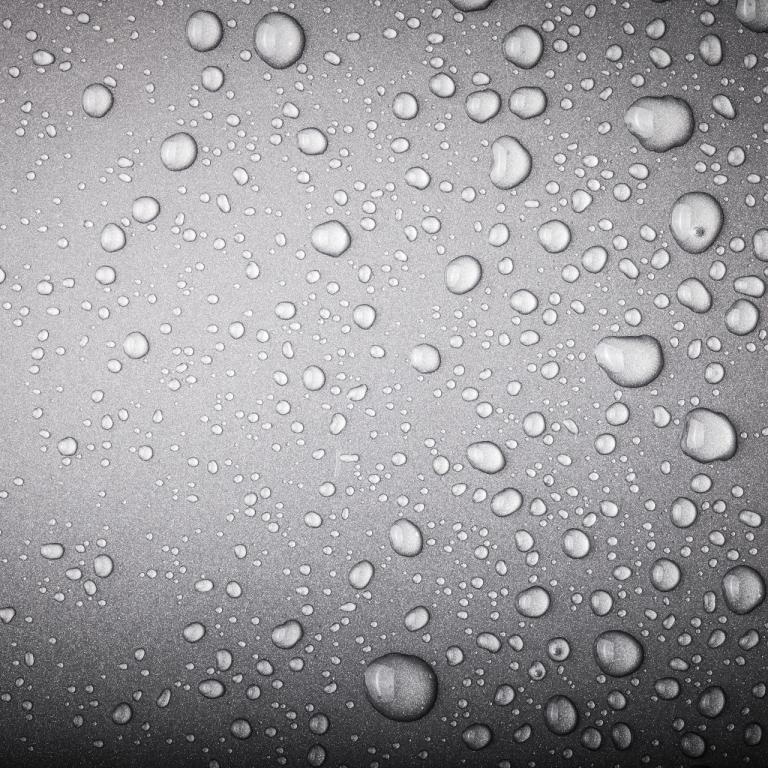Reviewed by Danielle Ellis, B.Sc.Sep 26 2022
Tufts University scientists recently devised a technique to produce silk-based materials that do not stick to water or almost anything else containing water.
 Water beading on a nonstick surface. Image Credit: Shutterstock.
Water beading on a nonstick surface. Image Credit: Shutterstock.
The modified silk, which possesses nonstick properties that outperform nonstick coatings typically used on cookware, may be molded into plastic shapes or coated onto surfaces as a film. It may find use in a variety of consumer and medical products.
Since ancient times, silk, a natural fiber spun by moths, has been used to make both exquisite and long-lasting clothing as well as surgical sutures to close wounds.
To create everything from implanted orthopedic screws to textile inks that change color in response to human chemistry, scientists have lately learned how to breakdown fibers to their basic protein component, silk fibroin, and then reconstitute it into gels, films, sponges, and other forms.
What makes silk such a unique material is that not only can it take on a wide range of forms and shapes, but one can easily change its properties by chemically modifying the silk fibroin.”
Krishna Kumar, Robinson Professor, Chemistry, Tufts University
Krishna Kumar explains, “If we want to make orthopedic screws that are absorbed by the body at different rates using silk fibroin, we modify the chemistry. If we want to create a blood sensor that detects oxygen, or glucose, or other blood components, we modify the chemistry. In this study, we modified silk fibroin to repel water, and we can do it in a way that can ‘tune’ the material to be more or less water repellant.”
The study was published in the journal ChemBioChem.
Resisting attraction
Changing silk fibroin into a water-repellent substance requires the application of perfluorocarbons, which are short chemical chains composed of fluorine and carbon. These chains are incredibly stable, interacting with no proteins or other biological components in the body. They do not really react to other substances.
Negatively and positively charged branches on the natural surface of silk protein act as a magnet to attract water, but when the protein is coated in perfluorocarbons, there is little for the water to adhere to.
Perfluorocarbons can even withstand attraction from other forces that normally pull molecules together. Changing the quantity and length of perfluorocarbon chains on the silk protein can alter its “unstickiness.” The quantity of fluorine needed on the surface of silk to display nonstick behavior was determined by Luke Davis, an assistant professor of chemistry.
Because the chemical synthesis is performed under mild conditions, the manufacturing process may be safer for both workers and the environment than that of other nonstick compounds. Two boxes for sustainability are checked: safer manufacturing and a renewable biological supply of material.
The Tufts researchers determined the nonstick feature by studying how water beads up on the material’s surface, similar to how water rolls off a waxed car. Water coiled up into drops that are even tighter shaped on nonstick silk molded into bars utilizing the greatest degree of perfluorocarbons.
Water is not the only thing that rolls off the nonstick silk; any substance with water as a key component, such as numerous meals, blood, cells, and tissues, is. Perfluorinated materials, which were not evaluated in this study, are also known to repel oils.
Modifying medical devices to prevent detrimental interactions with water and other biologics has the potential to preserve strength and integrity for as long as they are needed. Silk is already relatively inert to the immune system, so tuning its ability to repel cells or other substances could make it even more useful.”
Julia Fountain, Study Co-Author and Graduate Student, Tufts University
Extremely nonstick surfaces have advantages that go far beyond medical use. Even though there are worries about the chemicals in commercially available nonstick coatings being absorbed into the body, silk-based nonstick surfaces may provide an alternative that should be looked into because of their relative safety.
Imagine metal surfaces that prevent rust, fabrics that are easy to clean, and windshields on cars where rain simply rolls off without the need for wipers.
The success we had with modifying silk to repel water extends our successes with chemically modifying silk for other functionalities—such as the ability to change color, conduct electrical charge, or persist or degrade in a biological environment. As a protein, silk lends itself well to modular chemistry—the ability to ‘plug in’ different functional components on a natural scaffold.”
David Kaplan, Stern Family Professor, Engineering, Tufts University
Source:
Journal reference:
Fountain, J. N., et al. (2022) Towards Non-stick Silk: Tuning the Hydrophobicity of Silk Fibroin Protein. ChemBioChem. doi.org/10.1002/cbic.202200429.